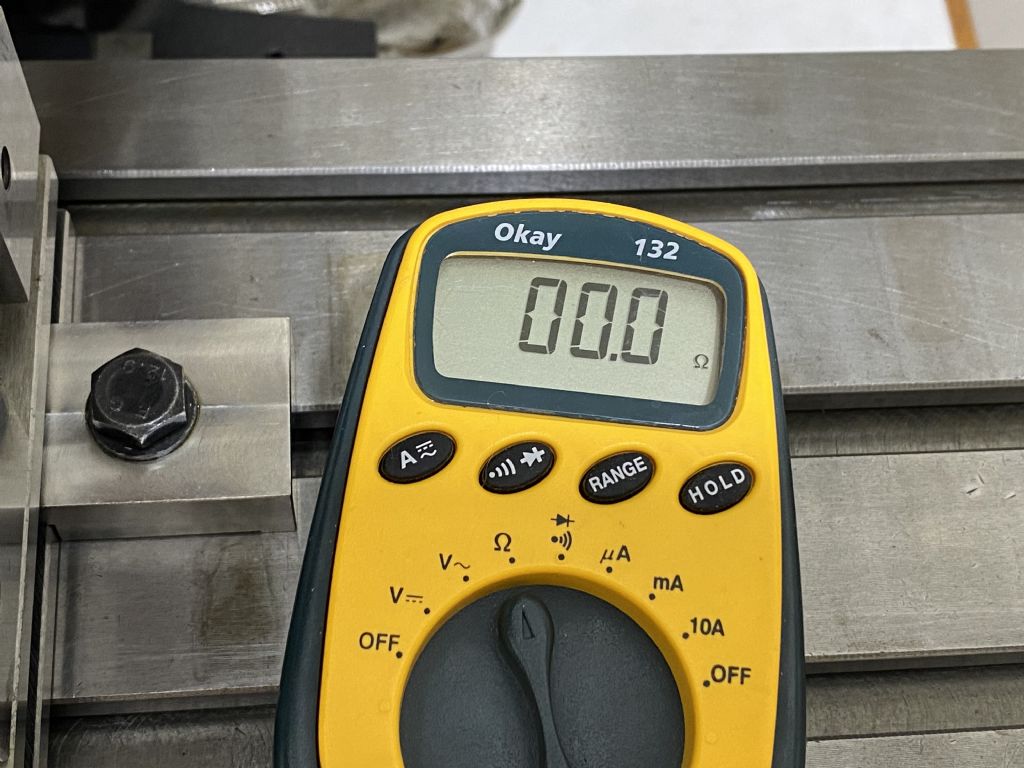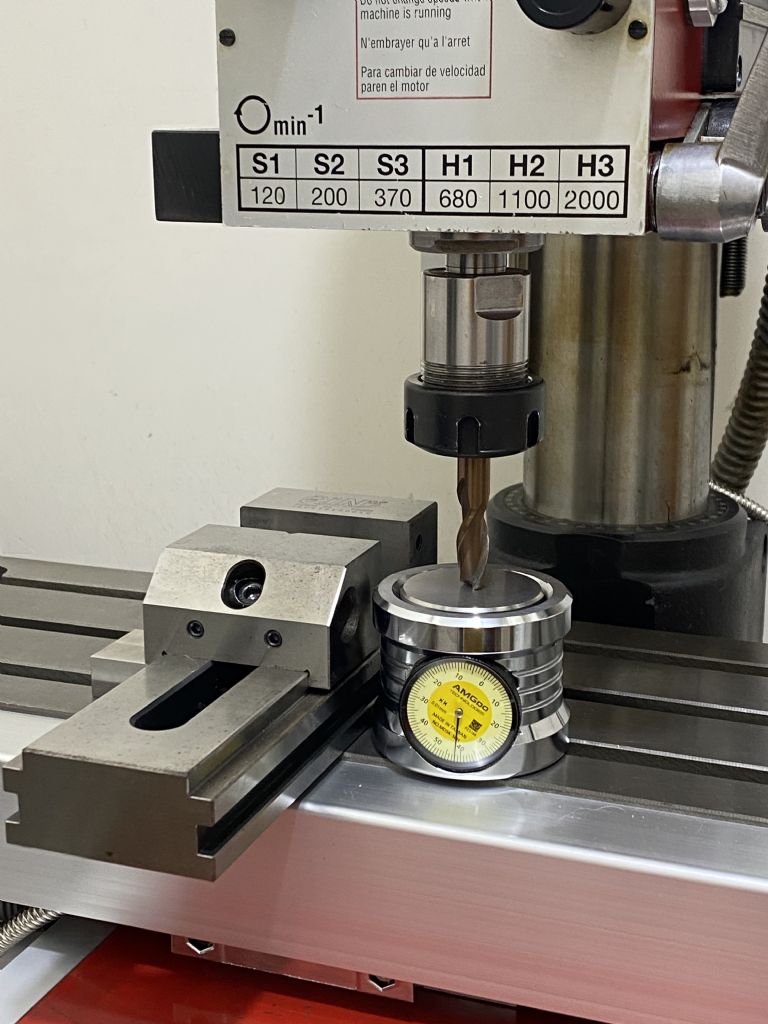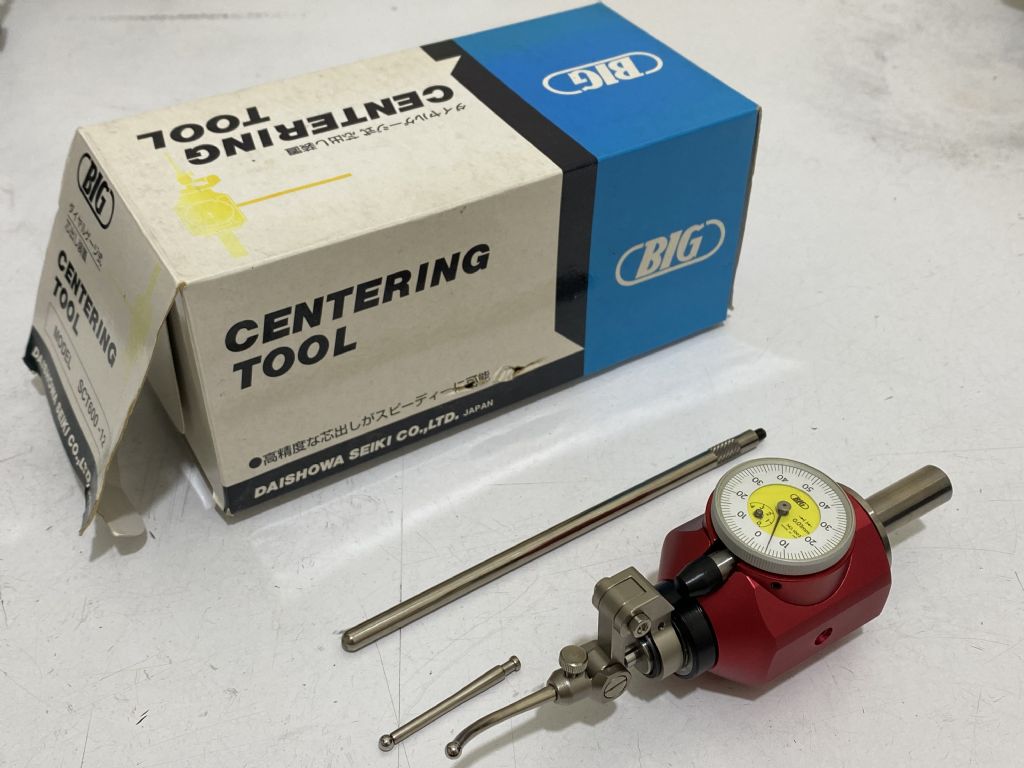I've often thought about that, though in practice I use either the oiled-paper or wiggler. If the distance from the cut feature to the edge is not ever so fussy (e.g if what matters is the pitch of a set of holes along a piece of hot-rolled steel), sometimes I simply eye the alignment of a centre-drill point with the edge.
To answer Gary Wooding's question further; yes the path between work-surface and tool is all metal-to-metal but via lots of joints, each adding a tiny resistance, and each of most of those joints holds a film of oil that increases its the resistance further. So although the cumulative series of resistances is very low, it is enough for a reasonably sensitive meter to detect.
'
I had thought a lamp, either filament or l.e.d, might be an even sharper detector because it is either on or off, though a filament one at least is likely to glow more dimly than it otherwise would for the same battery voltage.
Then having posted that, realised my mistake there and came back to edit it!
I had half-remembered my old idea of using as the machine contact, a metal ring pressed or glued onto a rigid plastic mandrel and finish turned to a set radius; this assembly to be held in the chuck or collet. Therefore the circuit does not go through the machine itself, and presents a switch rather than change of resistance to detect.
Edited By Nigel Graham 2 on 14/06/2022 14:44:33
Y C Lui.










